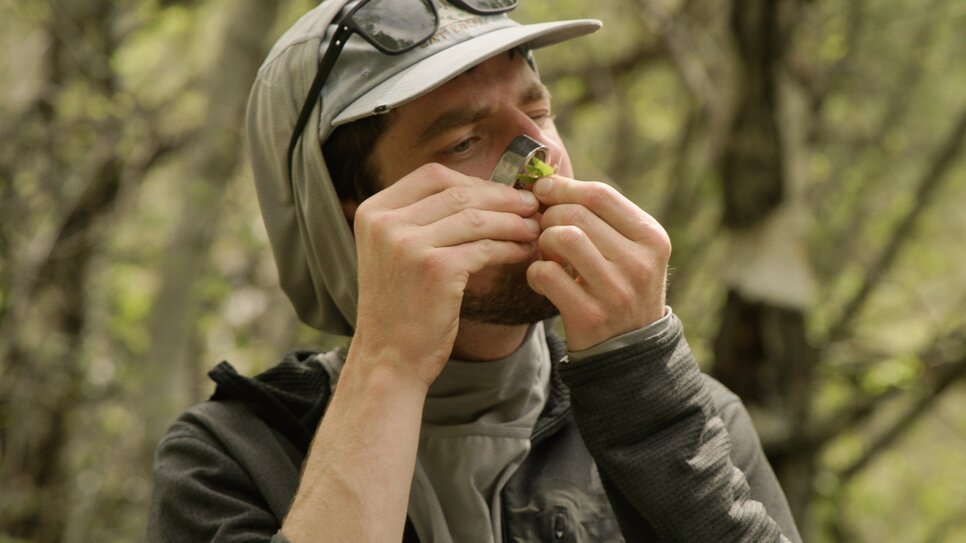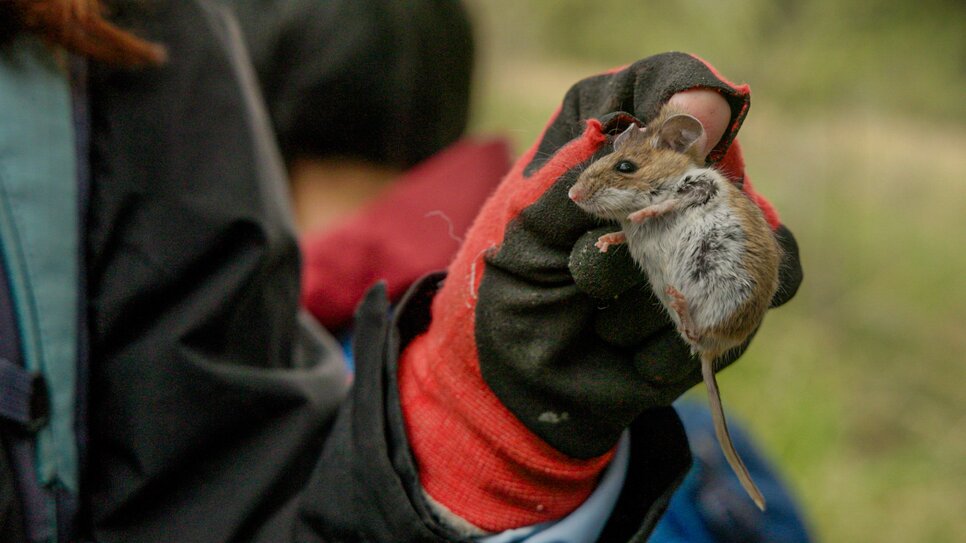Naturalists kick off statewide ‘bioblitz’ of Colorado ecosystems
share

GOLDEN, Colo. — John Sovell traipsed through the meadow with his trusty insect net, but the butterflies were hiding.
Sovell, an invertebrate zoologist and ecologist with the Colorado Natural Heritage Program (CNHP), joined a parade of naturalists for a so-called “bioblitz” on a 350-acre property south of Golden Gate Canyon State Park, owned by descendents of American writer and naturalist, Aldo Leopold.
“I’m kind of a jack-of-all trades,” said Sovell, whose knowledge of the natural world extends beyond what his professional title suggests.
“I'm here as a wildlife ecologist,” he said. “We have botanists and we have plant ecologists, and we descend on this property and we spend two days just recording all of the plants and animals that are on the property.”
The bioblitz served as the launch of the Colorado Natural Heritage Program’s statewide biodiversity survey, during which naturalists will establish Colorado’s first comprehensive survey of plants, animals and natural heritage resources.
Through the study, researchers hope to provide a clearer picture of how certain species are faring and help counties, organizations and individuals make smarter conservation decisions.
In practice, the bioblitz involved dozens of naturalists scouring the property for rare flora and fauna — which can provide vital metrics as to the health of an ecosystem.
On the second day of the bioblitz, Sovell guided a team of five CNHP interns around the property. The night before, he and the interns had placed 50 small metal boxes with bait around a stream to trap mammals that they could identify, measure and release.
“Our success on the first night is always low. They get a feel for where they are [the traps], they smell them, maybe they’re a little cautious. You tend to get a higher trap success rate over time until about the third night,” Sovell told the group.
The first ten traps laid untouched, then he picked one up that was overturned. There was nothing inside, but Sovell suspected a predator had visited the trap during the night.
“These [traps] definitely have a rodent smell in them. They get cleaned out, but a predator is going to be able to smell that and come right to it,” he said.
As I walked with Sovell, we ducked under branches and over barbed wire fences. I couldn’t remember the last time I’d stopped to examine my surroundings at such a macro level.
“I think in the modern world, we have lost our attachment to the land,” said Sovell.

Clark Hollenberg examines a plant during a bioblitz in Gilpin County.
Photo: Cormac McCrimmon, Rocky Mountain PBS
He uses a small amount of grain to attract rodents and places a piece of polyfill fiber in the traps that allows the rodents to keep warm at night.
Photo: Cormac McCrimmon, Rocky Mountain PBS
He uses a small amount of grain to attract rodents and places a piece of polyfill fiber in the traps that allows the rodents to keep warm at night.
“We try to add as little brutality to it as we can and make things comfortable for the mice in the traps,” said Sovell.
Sovell believes that as humans become more disconnected from the land, it becomes easier to lose sight of the harsh realities inevitable in nature.
“People have an ideal of nature that it's such a docile environment and a place to escape to and enjoy,” he said. But “nature really does not tolerate failure in any species.”
Eventually, the group arrived at a trap that had worked. Sovell picked up the small metal box and slid a rodent into a plastic bag.
“This is a deer mouse. It's got a very bi-colored tail and the ventral surface is distinctly white,” he said.
Next, he demonstrated how to handle the mouse in order to inspect and measure it. Careful to avoid the rodent’s sharp teeth, he worked to grab the mouse by the back of its neck.
“Have you ever seen on nature programs and stuff, where a mother will move the babies and they scruff it and it just goes docile, they just stop fighting?” said Sovell.
He showed the students how to identify the animal’s sex and use calipers to take measurements. Over time, these individual observations will form a mosaic that can provide clues about the health of an ecosystem. Understanding which plants and animals live where and in what condition can shed light on how human disturbance is affecting the landscape and highlight where people should direct conservation efforts.

A CNHP intern handles a mouse during the bioblitz.
Photo: Cormac McCrimmon, Rocky Mountain PBS.
Photo: Cormac McCrimmon, Rocky Mountain PBS.
“I always think about how lucky these interns are and how much I wish I had the opportunity to experience something like this,” said Sovell.“If I had something like this, I think I may have come to the decision earlier on in my career that this is what I wanted to focus on.”
Years ago, Sovell began a doctorate program, but he soon began to question his trajectory. He feared a career ridden with pressure to “publish or perish.”
“It's very stressful, very demanding, and this was an opportunity, I think, to have what I personally perceive as a larger impact on conserving these wide open spaces that we have in Colorado,” said Sovell reflecting on his career with the CNHP, a non-academic department housed at the Colorado State University.
Sovell grew up in Minnesota, where he developed a deep appreciation for the natural world during long sojourns in the Boundary Waters Canoe Area Wilderness.
“Not seeing anybody for weeks at a time. I think that was kind of what led me into this,” he said, describing his passion for field science.
While the Colorado Natural Heritage Program focuses primarily on rare plants and animals, its ultimate focus is on generating broad knowledge that can provide a picture of the entire landscape. Sovell sees this as a refreshing distinction from the hyper-specialization that grips many other scientists.
“Understanding what's on the landscape and where it is and what condition it is in — that is the basic understanding you need to go into conservation science. Where on the landscape can we get the biggest bang for our buck?” said Sovell.
While not everyone may consider himself a conservationist, Sovell believes ranchers, farmers and scientists have more in common than they’re willing to admit.
“The private land owner and rancher needs to maintain the integrity of the landscape in order to continue to make a living off of it. They would not admit they're doing ecology, but when I go on some of these private lands, I see that they’re practicing ecology on their landscape in order to maintain and continue to earn a living off of it,” he said.
“Extracting gas and oil and putting pads down, decimating landscapes is not something to be, like Edward Abbey would say, ‘monkey wrench it.’ It’s something that we need to understand how to manage. We’re not above the ecosystem, we’re part of it.”